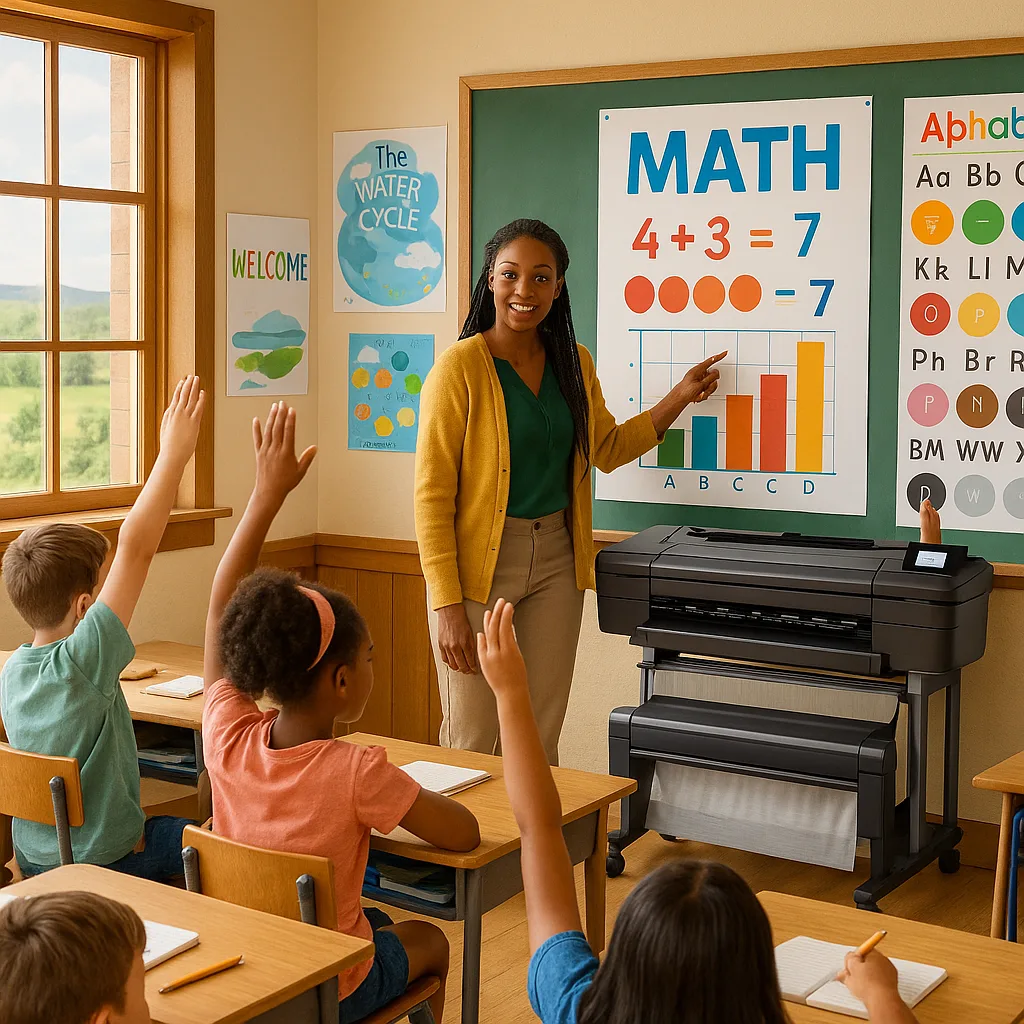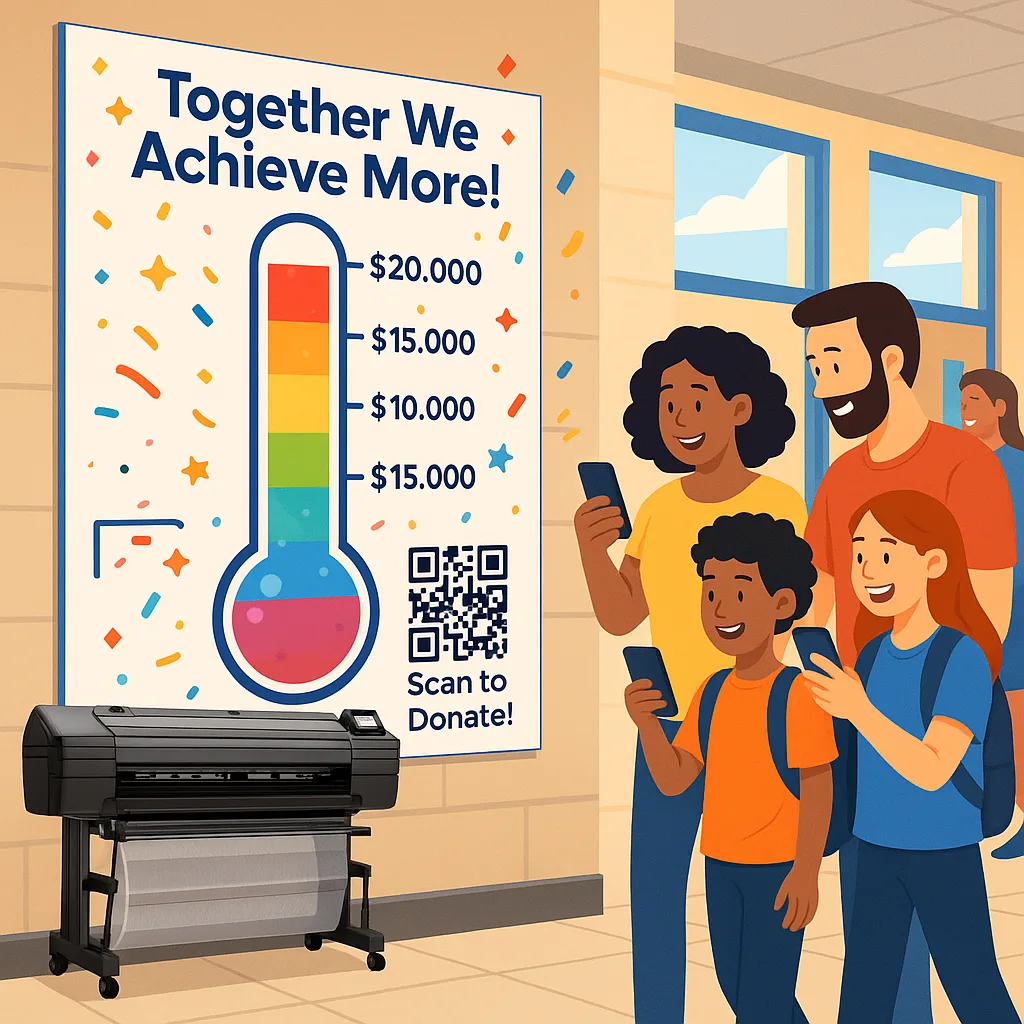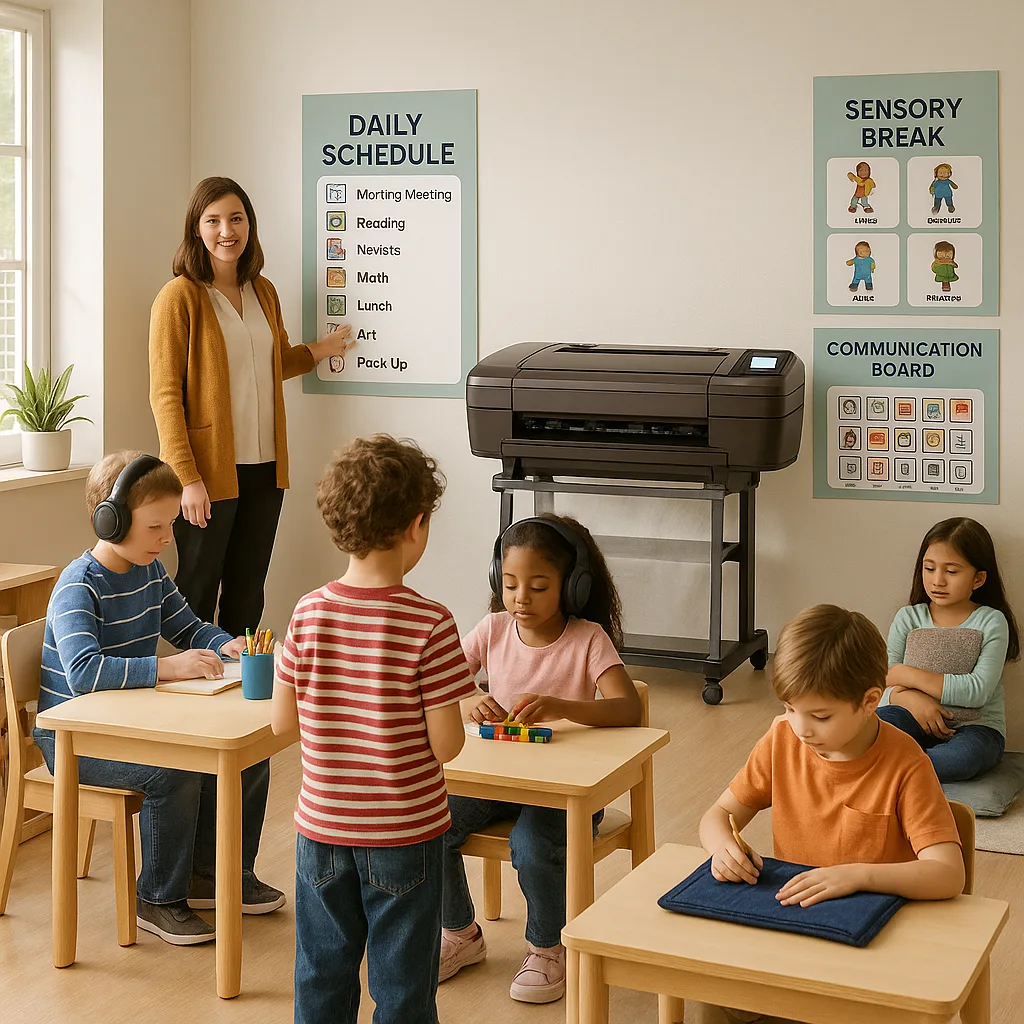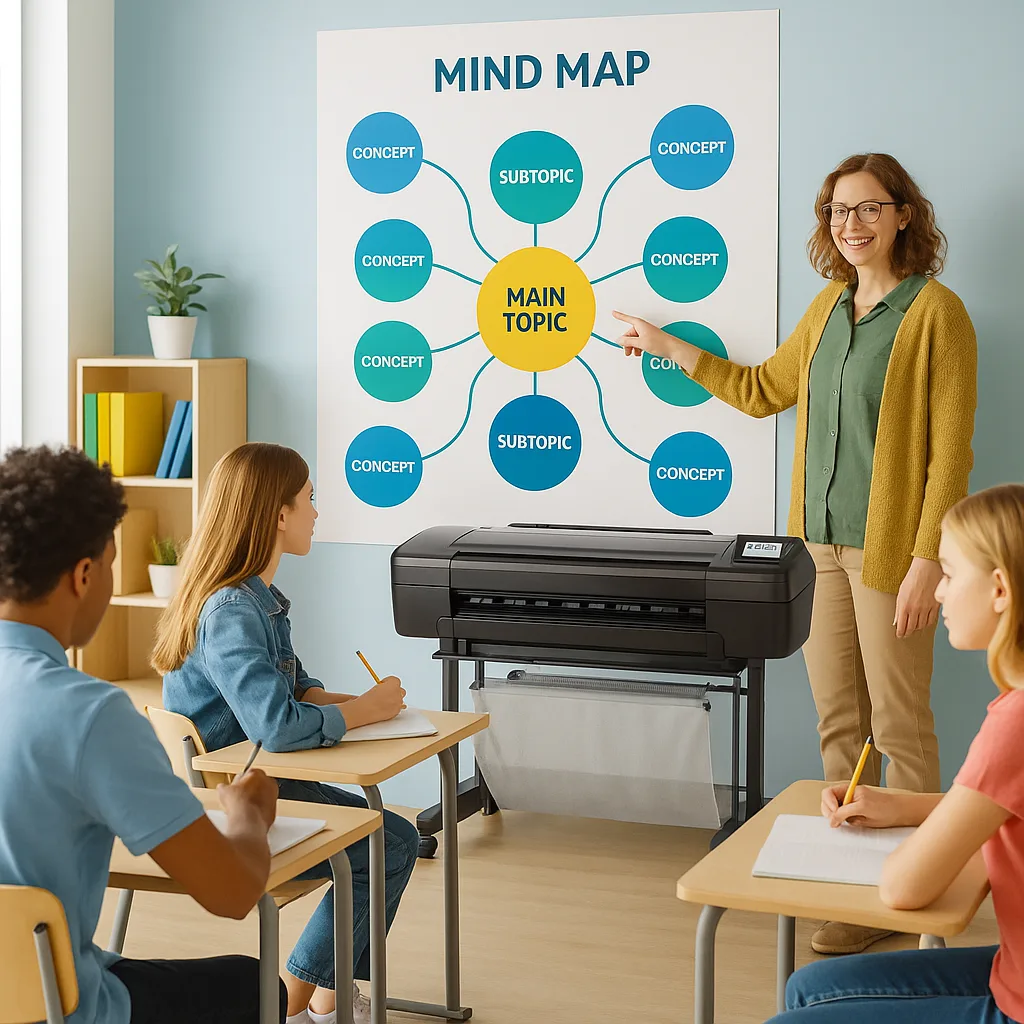
“Can you help me reach Sarah?” Ms. Martinez asked during our planning period last week. “She hasn’t spoken a word since September, but I know she’s brilliant—her written work proves it.” This conversation sparked something I’d been researching all semester: creating comprehensive visual systems that give students with selective mutism a voice without forcing them to speak. After implementing these strategies with three students this year, I’ve watched silent learners transform into active participants. Therefore, let me share what’s working in my classroom using our school’s poster maker for schools selective mutism communication boards.
Understanding the Silent Struggle: Why Poster Maker for Schools Selective Mutism Systems Matter
Selective mutism affects roughly 1 in 140 children, yet many classrooms lack appropriate visual communication tools. These students aren’t choosing to be difficult—anxiety literally freezes their ability to speak in certain settings. However, research from the Selective Mutism Association shows that visual supports can reduce communication anxiety by up to 70%.
My first experience came when Lily joined my class. She could speak freely at home but became completely silent at school. Traditional participation methods left her excluded and frustrated. That’s when I discovered how poster maker machines could create customized communication systems that respect comfort levels while encouraging engagement.
Visual communication boards serve multiple purposes. First, they provide immediate ways for students to express needs, answer questions, and share ideas. Second, they reduce the pressure of verbal communication while maintaining academic participation. Most importantly, they create a bridge toward eventual verbal communication by building confidence through successful interactions.
Essential Visual Communication Components
Emotion Check-In Displays: The Foundation of Trust
Every morning, my students find our emotion check-in board waiting by the door. Created with our poster maker for schools, this display features colorful emotion faces ranging from “excited” to “worried” with corresponding colors. Students simply move their name tag to their current emotion—no words required.
This simple system accomplishes several goals. It gives me immediate insight into each student’s emotional state. It normalizes discussing feelings without requiring verbalization. Additionally, it helps students with selective mutism feel seen and understood from the moment they enter.
The Education Express 24″ Poster Maker Package A works perfectly for creating these displays. Its vibrant color printing ensures emotions are clearly distinguishable, while the durable paper withstands daily use. Furthermore, the included design software makes updating emotions or adding seasonal themes effortless.
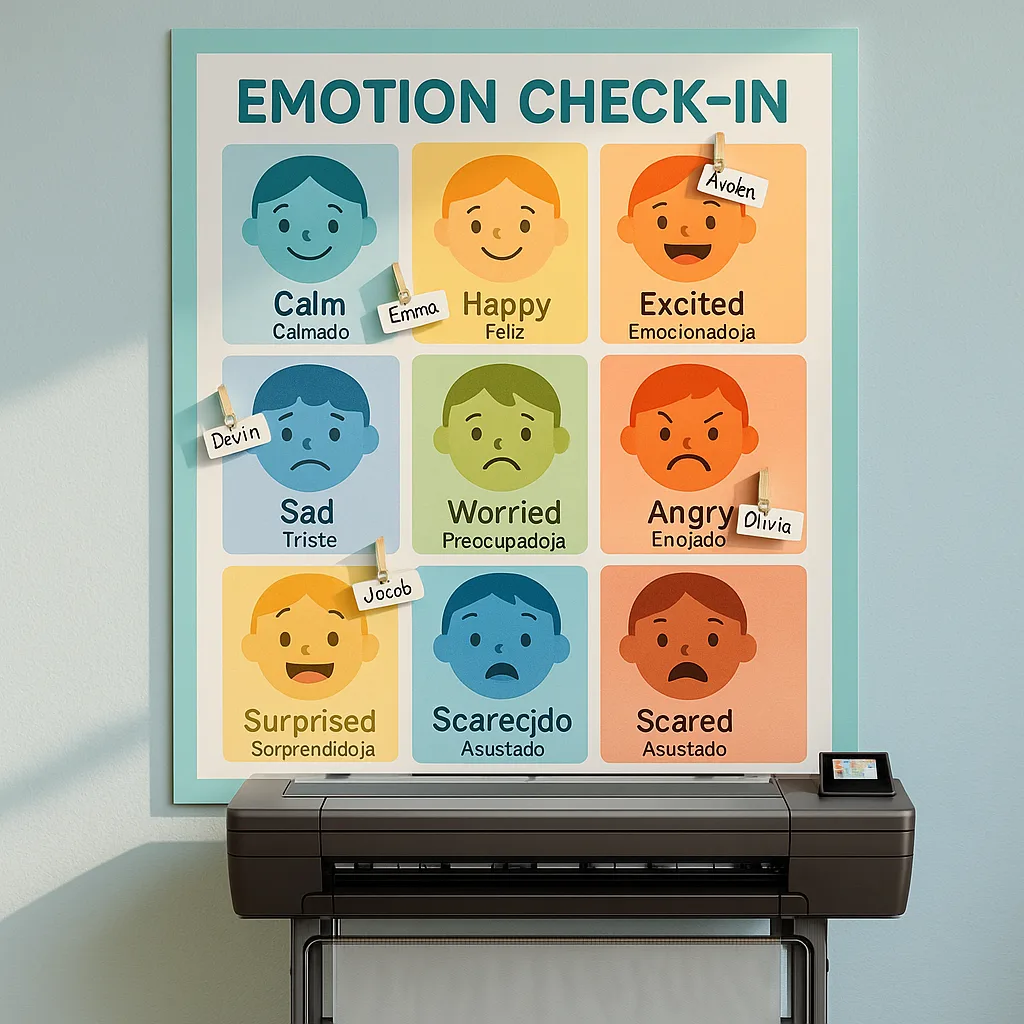
Academic Participation Boards: Learning Without Speaking
Traditional hand-raising puts enormous pressure on students with selective mutism. Instead, I’ve developed multiple visual participation systems using our poster maker machines. These boards transform silent students into active learners.
My math participation board features removable number cards, operation symbols, and “I need help” indicators. Students can solve problems by arranging cards on their desk-mounted mini boards. For group activities, they hold up pre-printed response cards created on coated poster paper for durability.
Similarly, our reading comprehension board includes character cards, plot point symbols, and emotion indicators. Students can sequence events, identify themes, or show character relationships without uttering a word. Moreover, these visual responses often demonstrate deeper understanding than verbal answers because students take time to consider their choices.
Safe Communication Zones
Some students with selective mutism can whisper to trusted peers but freeze in whole-group settings. Therefore, I’ve created designated “whisper zones” marked by calming mint-green posters. These areas feature visual communication aids plus sound-dampening materials that reduce anxiety about being overheard.
The lifetime design service helped me create custom zone markers that match our classroom’s sensory needs. Each zone includes communication boards specific to that area—the reading corner has book response options, while the math station features problem-solving prompts.
Implementation Strategies That Respect Comfort Levels
Starting Small: Building Confidence Through Choice
When implementing visual communication systems, I learned the hard way that overwhelming options increase anxiety. Start with just three to five choices per board. For instance, my first emotion check-in featured only happy, sad, and worried. As students grew comfortable, we gradually added more nuanced emotions.
Choice-making itself builds communication confidence. Research published in the Journal of Communication Disorders shows that successful non-verbal communication experiences can reduce speaking anxiety over time. Therefore, every point-and-choose interaction moves students closer to verbal participation.
I introduce new boards during low-pressure activities. Art time works perfectly—students can request materials using picture cards without disrupting creative flow. Once they’re comfortable with art communication, we expand to academic subjects.
Peer Support Systems: Silent Partners
Pairing students with selective mutism with understanding classmates creates natural support networks. However, these partnerships need structure to prevent enabling behaviors. My “communication buddy” system uses visual cue cards that remind partners when to offer help versus encouraging independent communication.
Poster maker for schools selective mutism applications shine here. I create personalized buddy cards featuring both students’ photos and their agreed-upon support signals. These laminated cards (using our PSE Cool 25″ Cold Laminator) stay on desks as gentle reminders of their partnership goals.
Partners practice using visual systems together during structured activities. They might collaborate on a story using picture prompts or solve math problems with manipulative cards. Subsequently, when the student with selective mutism needs to communicate with others, their buddy can model using the same visual tools.
Progress Tracking Without Pressure
Celebrating communication victories requires delicate balance. Overt praise for speaking can increase anxiety, yet progress needs acknowledgment. My solution involves private celebration systems that students control.
Each student has a communication journey poster displayed in our quiet corner. Using our poster maker machines, I create personalized progress trackers featuring their interests—Lily’s shows a garden growing as she meets communication goals. Students add stickers privately when they feel successful, whether that’s answering with a card or whispering to a friend.
These visual progress displays serve dual purposes. Students see their growth over time, building confidence for future challenges. Meanwhile, I can assess which communication methods work best for each child without direct observation pressure.
Practical Templates and Classroom Applications
Morning Meeting Modifications
Traditional morning circles can paralyze students with selective mutism. However, visual modifications make full participation possible. My morning meeting board includes weather cards, feeling faces, and weekend activity pictures that students can hold up during share time.
The satin photo paper creates beautiful, durable cards that feel special to hold. Students often trace the smooth edges while waiting their turn—a calming sensory input that reduces anxiety.
During calendar time, students with selective mutism serve as “silent helpers” who point to dates or hold number cards. This gives them important classroom jobs without speech requirements. Furthermore, classmates learn that communication takes many forms, building empathy and inclusion.
Subject-Specific Communication Boards
Each subject area needs tailored visual supports. My science board features hypothesis cards (“I think,” “I wonder,” “I notice”) plus common observation descriptors. Students can fully participate in experiments by combining cards to share findings.
Mathematics requires different supports. Number cards, operation symbols, and strategy indicators (“counting on,” “making ten,” “using manipulatives”) let students demonstrate problem-solving thinking. Additionally, “stuck” cards signal when help is needed without verbal requests.
The demo video showed me how quickly these boards can be created and modified. When we switch units, I can design new vocabulary cards in minutes, ensuring visual supports always match current learning.
Assessment Adaptations
Testing creates extreme anxiety for students with selective mutism, potentially triggering complete shutdown. Visual assessment options maintain academic rigor while respecting communication challenges. Instead of verbal reading assessments, students sequence picture cards or point to story elements on comprehension boards.
Math assessments use manipulative photographs that students arrange to show problem-solving steps. Writing assessments might involve organizing pre-printed sentence strips or selecting describing words from a visual word bank. Consequently, I can accurately assess knowledge without the communication barrier.
Creating Inclusive Classroom Environments
Universal Design Benefits
While designed for students with selective mutism, visual communication systems benefit everyone. English language learners use picture cards to supplement developing vocabulary. Anxious students appreciate non-verbal check-in options during overwhelming moments. Even typically verbal students enjoy the variety of expression methods.
This universal approach reduces stigma. When everyone uses visual communication tools, students with selective mutism don’t feel singled out. Moreover, classmates develop multiple communication skills that serve them throughout life.
Our cost-effective printing means I can create enough materials for whole-class use without breaking my supply budget. At roughly $1.50 per poster, every student can have personalized communication tools.
Family Connection Tools
Home-school communication becomes complicated when children speak freely at home but not at school. Therefore, I create take-home versions of our classroom communication boards. Families can see which systems their child uses successfully and practice similar strategies at home.
Parent communication cards help during conferences. Instead of discussing their child’s challenges in front of them, parents can point to concern cards while children engage with quiet activities. This respects the child’s comfort while enabling necessary conversations.
The testimonial video from another school inspired me to create family workshop materials. Parents learn about selective mutism while creating communication tools together, building understanding and home support systems.
Measuring Success Beyond Words
Redefining Participation
Success for students with selective mutism looks different than traditional metrics. Instead of counting verbal contributions, I track overall engagement through multiple indicators. Did they respond to questions using cards? Did they collaborate with peers through gestures? Did they demonstrate understanding through visual arrangements?
My observation charts, created with our poster maker for schools, track various communication forms. Checkmarks indicate card use, pointing, nodding, whispering to peers, or even eye contact maintenance. Over time, these charts reveal communication patterns and growing comfort levels.
Parents report breakthrough moments at home. “She showed me the emotion cards and asked if we could make some for her room,” one mother shared tearfully. These extensions beyond school walls indicate true ownership of communication tools.
Gradual Verbal Participation
While respecting non-verbal communication, we gently encourage verbal participation when students show readiness. Whisper phones—PVC pipe constructions that amplify self-hearing—let students practice speaking privately. Recording devices allow voice sharing without real-time pressure.
Some students progress to “voice buddies”—trusted peers who relay whispered messages. Others might speak only during specific activities like singing or choral reading. Each small vocalization builds toward fuller participation.
The key is patience without pressure. Research indicates that forced speaking increases anxiety and potentially worsens selective mutism. However, consistent visual communication support combined with gentle encouragement shows the highest success rates.
Moving Forward: Your Silent Success Toolkit
Creating comprehensive visual communication systems doesn’t require expensive technology or specialized training. With poster maker machines and creativity, any classroom can become inclusive for students with selective mutism. Start small with emotion check-ins, expand to academic participation boards, and celebrate every communication victory—verbal or otherwise.
Remember Sarah from my opening? Three months after implementing visual systems, she whispered her first classroom word: “bathroom.” It wasn’t dramatic or loud, but her smile lit up the room. Now she participates fully using combination of cards, gestures, and occasional whispers. More importantly, she knows her voice—however expressed—matters in our classroom.
Supporting students with selective mutism requires patience, creativity, and the right tools. Our poster maker for schools selective mutism systems provide the visual foundation these students need to thrive. Because every child deserves to be heard, whether through words, pictures, or silent smiles that speak volumes.
Ready to create your own visual communication systems? Call Poster Studio Express at 866-788-7900 to learn how their poster maker machines can transform your classroom into an inclusive communication haven. Together, we can ensure no student remains unheard.

